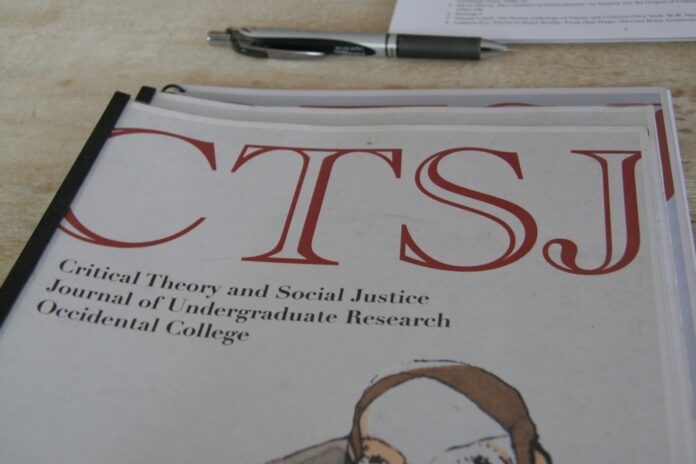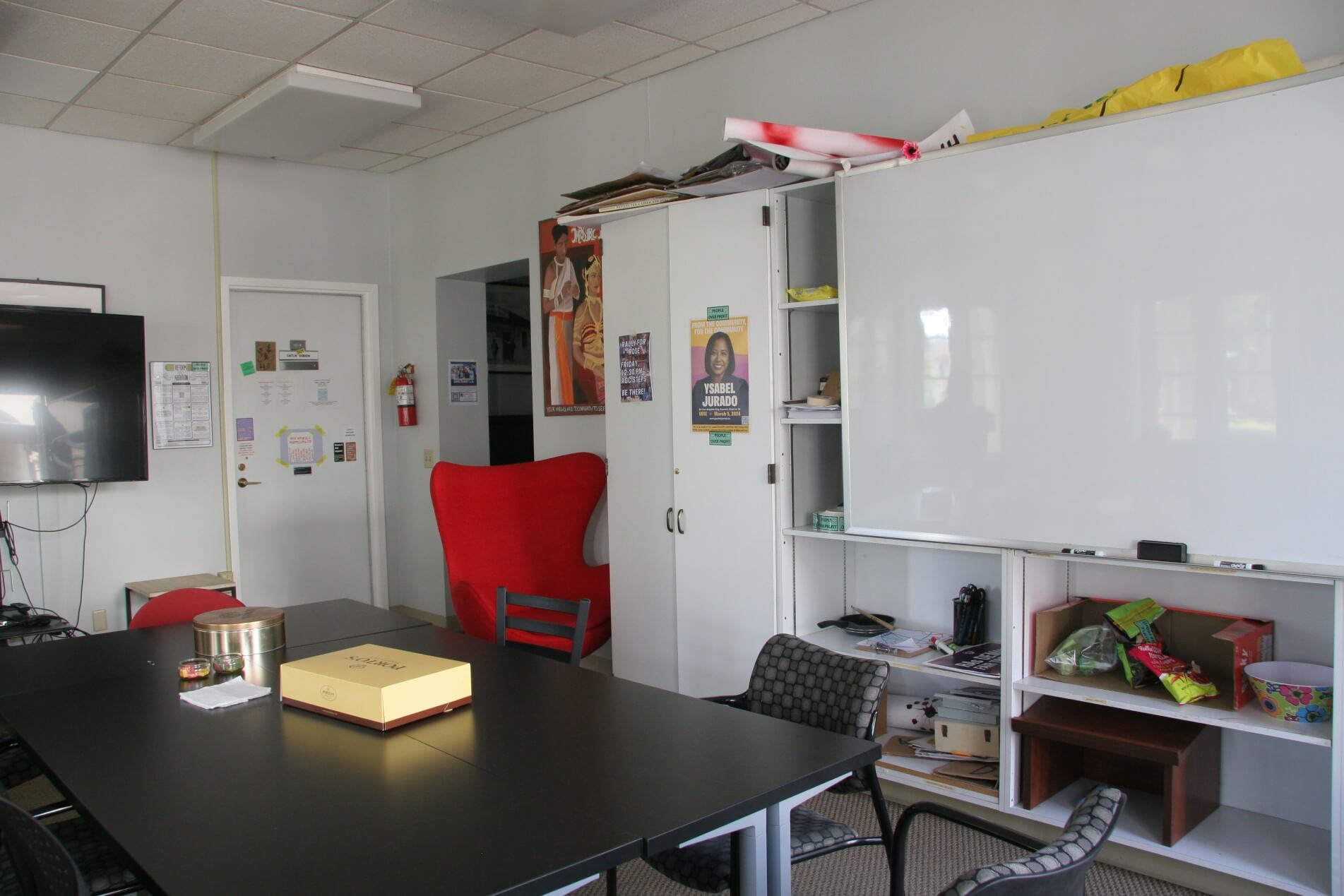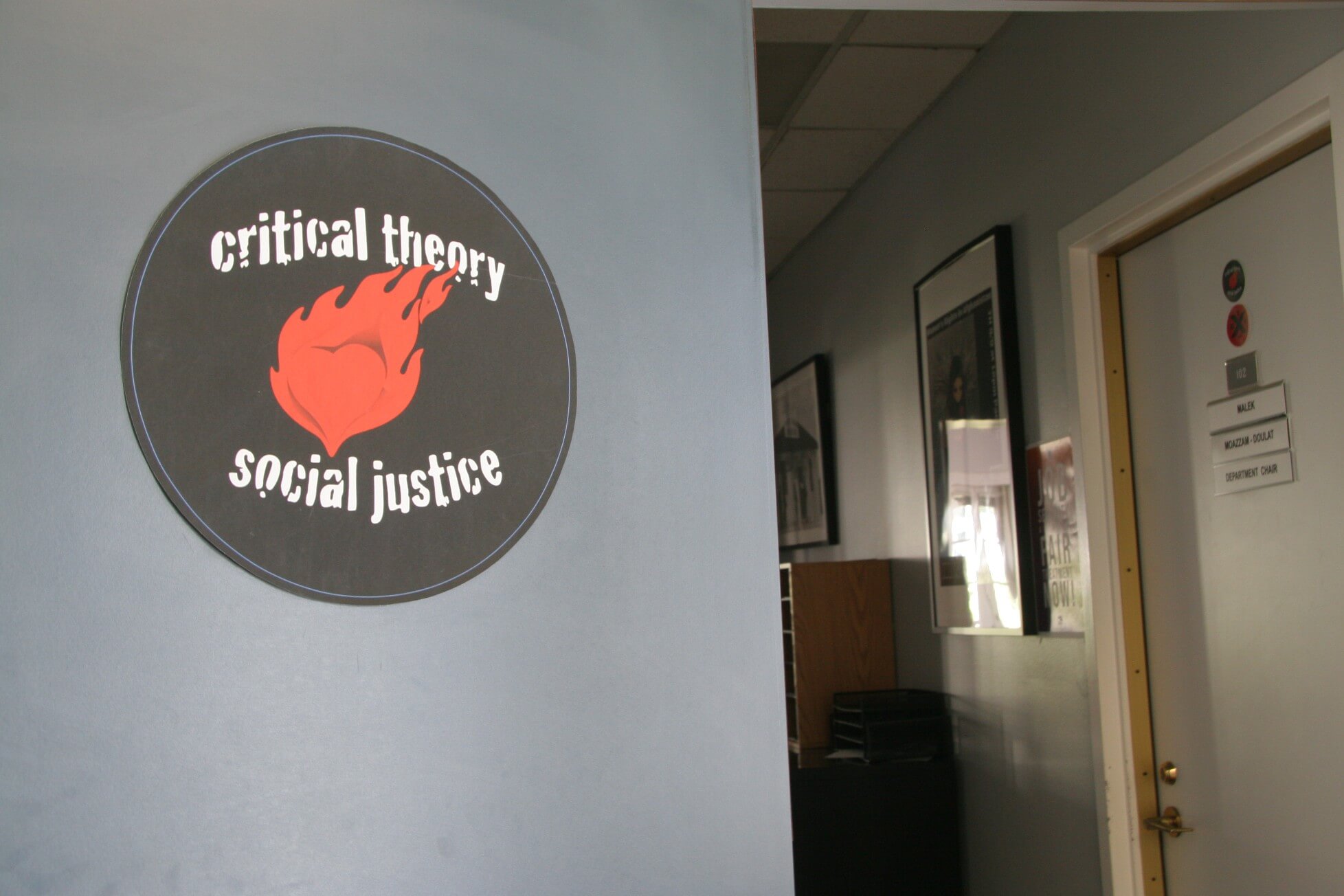
At the end of every school year, the Critical Theory & Social Justice (CTSJ) Undergraduate Research Journal publishes a collection of essays written by undergraduates at a range of colleges and universities. The essays, along with student artwork, center around themes of liberation and social change.
Tessa Calado (sophomore) is an editor on the journal and joined the publication last semester. She said via email that the journal aims to uplift alternative perspectives on social issues and features articles that question current realities.
“The journal is a place where we can see some of the ways that young people across the country are questioning these realities and investigating what justice can look like in our lives,” Calado said via email.
Gieselle Gatewood (senior) is the lead editor of the journal. She said that the journal specifically seeks to publish authors from many different colleges and universities, and that last year, the journal did not feature any articles by Occidental students or alumni. Gatewood said the journal has published authors from Harvard University, Middlebury College, The State University of New York (SUNY) and the Claremont Colleges, among many other schools. She said the journal also includes authors who attend schools outside of the U.S.
“We’re trying to publish other schools, since they don’t have a Critical Theory and Social Justice major or department,” Gatewood said.
Vivian Ko (sophomore) is an editor on the journal. She said that most articles published in the journal have already been written for class assignments or undergraduate dissertations, as opposed to being written exclusively for publication in the journal. According to Ko, Professor Malek Moazzam-Doulat, the journal’s faculty advisor and editor-in-chief, reaches out to institutions to request submissions.
“[Moazzam-Doulat] was […] reaching out to professors from different schools, asking for their students’ senior theses and dissertations,” Ko said.
Gatewood said that submissions are usually collected by Thanksgiving for publication in the Spring, but the timeline can vary. She said she has edited three volumes of the journal, and the publication receives around 25 to 40 submissions each year. Of those, she said five to six articles are ultimately selected for publication.
“It’s really selective because we really want to make sure we’re publishing work that aligns with our values, and aligns with our mission as both a journal and a department,” Gatewood said.
According to Calado, there are two rounds of edits performed after articles are selected for publication. She said editors first do larger edits, which can include suggesting that authors add additional sections to their articles. Once those edits are made, smaller, technical edits are performed to make sure pieces are ready for publication.

“A couple of editors will review each article for formatting, spelling, or grammatical errors and make other minor changes,” Calado said via email.
Gatewood said that there are currently 11 editors of the journal. According to Gatewood, all students at Occidental must be recommended by CTSJ professors in order to become an editor, instead of filling out an application themselves.
“If a student has been showing interest in journalism, or has really embodied what it means to be a CTSJ major or someone interested in both critical theory and social justice, a professor will recommend [them],” Gatewood said.
Gatewood said that one of her favorite pieces that has been published in the journal was submitted by Esther Karpilow ’22.
“She did a poem and artwork about her female reproductive system, and how that relates to sexual healing and trauma,” Gatewood said. “It was really nice to see it as art, as well as her artist statement.”
Ko said that the articles submitted to the journal often have narrow focuses, such as a case study on Florida Governor Ron DeSantis that will be published in this year’s edition. She said that reading the high quality of the articles sometimes makes her nervous about the prospect of doing similar writing during her senior comps, but that it helps her decide what specific aspects of CTSJ she is interested in studying.
“We read a lot of theory in class that is very broad, and not super tangible,” Ko said. “Applying those theories to real situations and things that are happening today, I think that’s something that I really want to focus on the next two years of my time here.”
Calado said the journal will publish its new edition April 29. Ko said the journal is still seeking out art submissions, and that they encourage Occidental students to submit their work.
“We’ve sent out a few emails out since last week,” Ko said. “We’re calling anyone, whether you’re an art major or not, to submit past work, or things that you’re currently working on.”
Gatewood said that students at other institutions are drawn to submitting to the journal because of Occidental’s unique CTSJ program and dedication to social justice, as well as the quality of the work the journal publishes.

“As a school and as a department, we’ve really done a good job of establishing ourselves a reputable school that centers social justice in our work,” Gatewood said. “Each volume we have is so amazing.”
The CTSJ Undergraduate Research Journal is available to read online, on the Occidental College website, as well as in print.
Contact Ruby Gower at gower@oxy.edu.
![]()


































